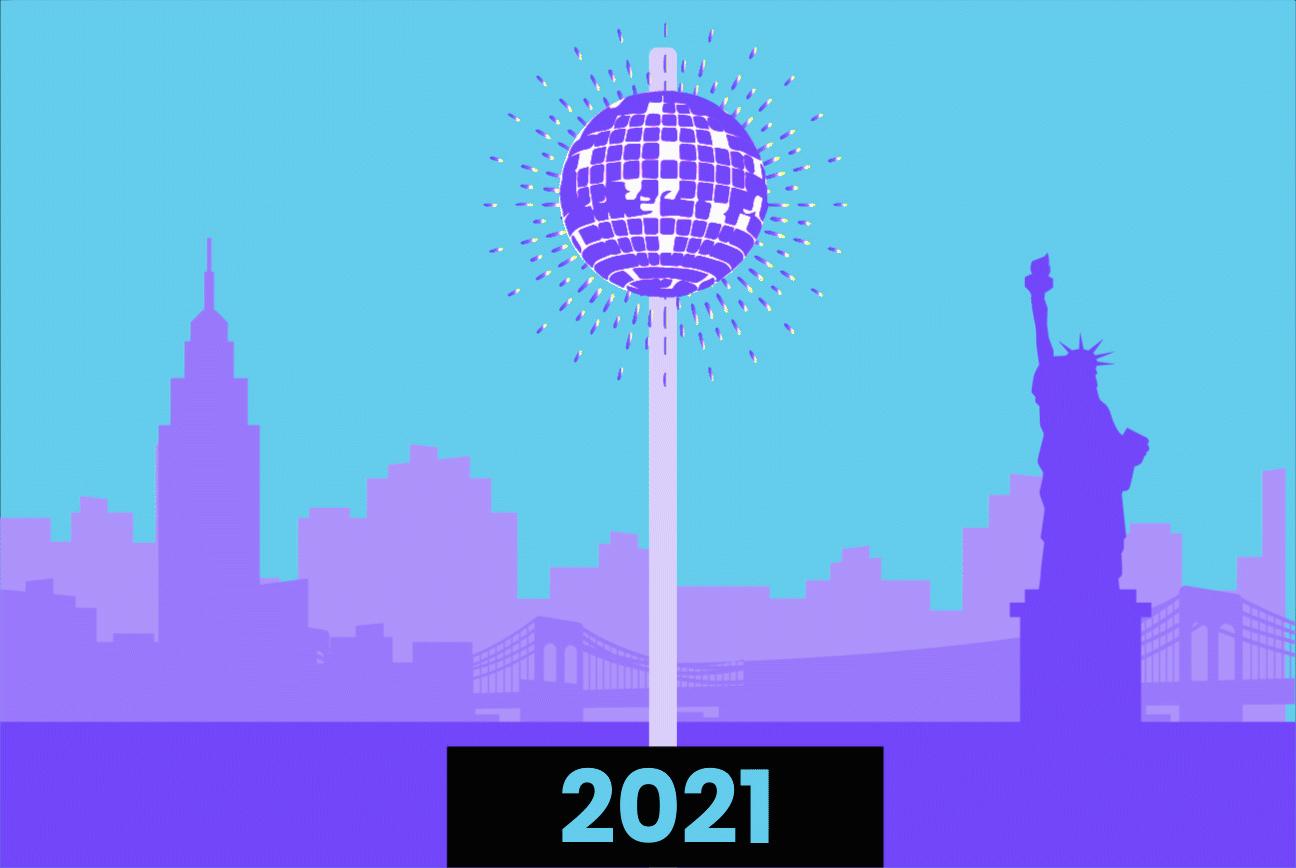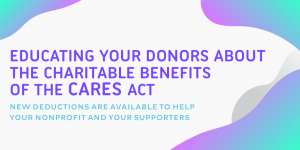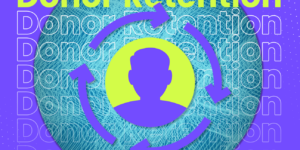It’s almost January and you’re nearly through the big year-end fundraising push! Pat yourself on the back for your hard work so far. You deserve it! But your work is not done on January 1. In 2021, fundraisers should plan to take their existing strategies to the next level.
After all, as fundraisers, we are always looking for ways to raise more money and make a bigger impact. These five strategies are designed to help fundraisers in 2021 take the next step and bounce back from the ups and downs that came in 2020.
WEBINAR RECAP: 5 Year-End Fundraising Strategies for Your 2020 Appeal
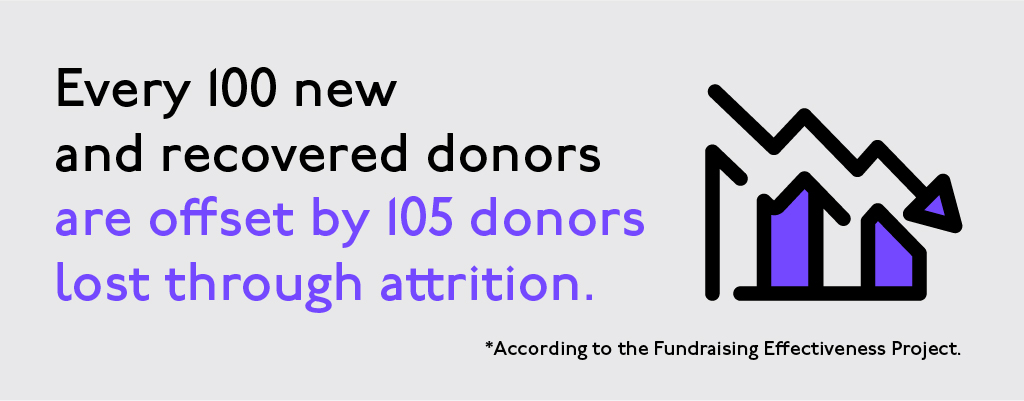
1. It’s all about the Benjamins.
That is, Ben, your donor from last year who was so excited to give, but you never heard from again. Yes, that Benjamin.
You probably already know that it’s more cost-efficient to increase the lifetime value of your current donors than it is to acquire new ones.
In fact, every 100 new and recovered donors recruited are offset by 105 donors lost through attrition, according to the Fundraising Effectiveness Project’s 2019 Report.
Fundraisers in 2021 should put an emphasis on retention over acquisition, even more so than normal this year. Let’s be honest, you probably have a tighter budget and less resources to work with this year than in the past.
So, you will need to get the most bang for your buck! And making sure your established donors continue with their support will help you more than securing a few gifts from new donors.
Don’t forget, only 19 percent of first-time donors will make a second gift. However, 63 percent of second-time donors go on to make another donation!
So when you focus on Ben, the donor, you can expect to receive more of the other “Benjamins”. Remember, your donors are on this journey with you. And you need to show them what makes them such an important part of achieving your goals if you want them to stick around.
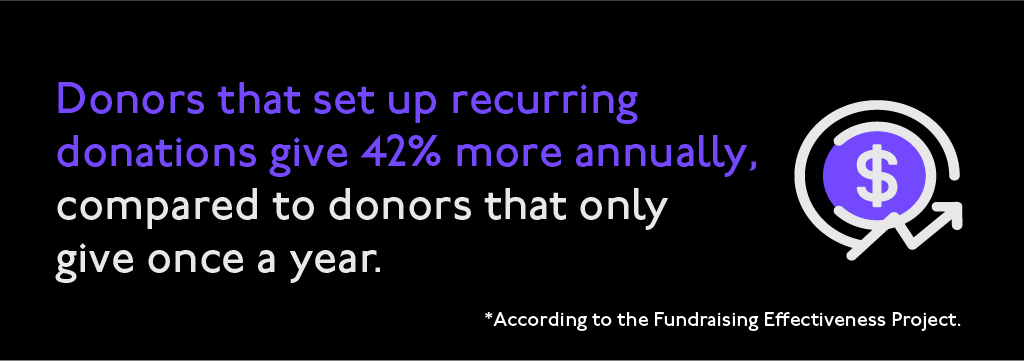
2. Make it monthly.
One way to improve donor retention and improve your cash flow, is through starting, or optimizing, your monthly giving program.
Still not sold that monthly giving is right for your nonprofit? Consider these facts, courtesy of Nonprofits Source:
- The average monthly online donation is $52 ($624 per year) compared to the average one-time gift of $128.
- Donors that set up recurring donations give 42% more annually, compared to once-per-year donors.
- Pre-selecting monthly giving on your donation page can increase conversions of monthly donations by up to 35%.
So, if you’re still not planning on making monthly giving a priority this year, what are you waiting for?
Sure, a robust monthly giving program takes a lot of work. You will need to build communications specific to these donors, offer benefits to monthly donors, suppress them from (or send different versions of) your regular appeals, and determine how you will process recurring donations.
But the work is well worth the reward! And you don’t need everything in place to get started! Start simple by including an option to “make it monthly” whenever a donor gives online and build up your strategy from there.
The key is just doing something to move you more in this direction.
READ: 5 Keys to Starting and Sustaining a Monthly Giving Program
3. Show donors some love.
In 2021, fundraisers will want to put their focus on the donor, rather than your organization. Being donor-centric is a great way to make your donors feel valued and like they are making an impact, regardless of their gift size.
One of the most effective ways to do this is putting the donor at the center of your story. Rather than highlighting your organization’s accomplishments, you will highlight the donor’s role in making these achievements a reality.
Start by including phrases like “with your help”, “because of you”, or “thanks to your generosity” when sharing the impact of your work. This will connect the dots for donors and show them the role they have in bringing your mission to life.
Another approach is to appeal to a donor’s sense of self. This involves identifying a trait or value that drew a specific donor to your organization in the first place, then using this information to bring your donor closer to the story and your mission.
So, consider versioning your messages to speak to certain donors more specifically. The key is to make the connection between a given data point and your message clear.
For example, a cancer research foundation can use versions to speak with segments like doctors or former patients more directly.
“As someone who works hands-on with patients, you know there is always more that needs to be done.”
Identifying a donor in this way and drawing a connection between their experiences and your work puts the donor into the story and shows them that they have the power to make an impact!

4. Digital: Love it or hate it, BUT embrace it.
Our world is more digital than ever. And this was the trend even before the pandemic hit. In some ways, COVID-19 accelerated an already developing trend among nonprofits, digital-first fundraising.
Digital-first strategies will continue to take the center stage for fundraisers in 2021. They allow for greater flexibility in the face of uncertain and rapidly changing conditions.
And it doesn’t seem like large in person gatherings, like a big fundraising event or gala, are coming back in the near future. So, nonprofits will again be thinking about how to bring their regular events into a digital space.
But how else can your organization think from a digital-first mindset in 2021?
First, consider limiting the number of direct mail appeals you send. You can’t make any changes once your appeals hit the presses. But focusing on email appeals will allow you to be more up-to-date and relevant in the face of rapidly changing situations.
Second, if your organization did not make social media a priority in 2020, do so in 2021! Break down your stories into bite size pieces to create a series of social media posts to keep your audience engaged in between other communications.
Remember, 55 percent of people who engage with nonprofits on social media end up taking some sort of action, according to Nonprofits Source.
And don’t forget to leverage your networks and use peer-to-peer fundraising! These campaigns are a great way to encourage your supporters to give back without a monetary commitment. So, ask some of your loyal supporters to share a pre-crafted message with their friends, family, and others they think would care about your work!
This could bring in a few more donations, but it will also help you reach new potential donors with similar values as your existing donor base.
EXAMPLE: How we helped BKYSC amp up their digital marketing efforts.
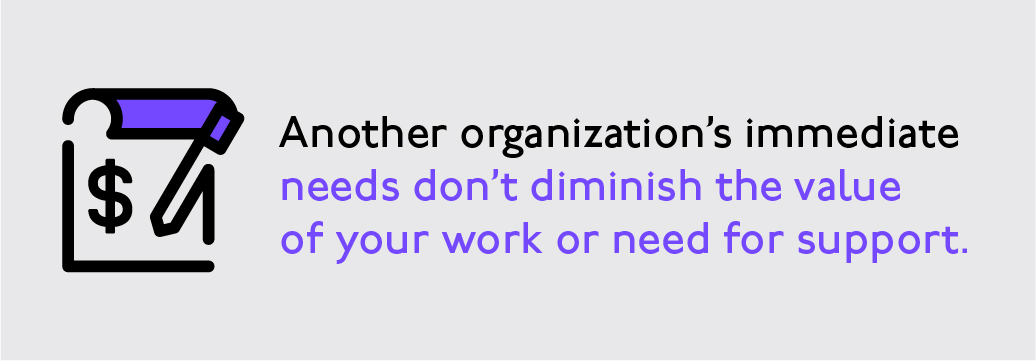
5. It’s not what you say, it’s how you say it.
Calling 2020 a challenging year would be an understatement. No one could have predicted the arrival of the coronavirus pandemic and how much it would impact not only everyday life, but the way we work as fundraisers.
And don’t forget, while your organization has likely faced its fair share of challenges, your supporters may have had a difficult year as well.
When the pandemic first hit, we wrote about how to be sensitive to your donors’ situations as you prepared for your spring appeal. But the pandemic is still affecting our daily lives, almost 10 months later.
So, many of the tips we offered for fundraising at the pandemic’s onset are still relevant. Especially when it comes to the tone and messaging in your appeals.
Until the pandemic is behind us, use the following strategies in your 2021 appeals:
- Show concern for the wellbeing of your supporters.
- Explain how the pandemic has impacted your mission.
- Describe your organizations urgent needs and explain why your work is still important.
- Consider using a less aggressive ask string in appeals
Remember, your donors are your partners in achieving your mission. Make sure they know that too. And, when they are ready to give, together you will do great things.
Above all, always strive for more.
The most important piece of advice we can offer to fundraisers in 2021 is to keep their foot on the gas and be flexible. 2020 was a whirlwind of a year. And some of us feel like we are catching up for the first time since March.
But you can’t stop now! Whether you want to identify a new approach to test out this year or tweak your existing strategies to get even better results, effective fundraising is about constantly searching for ways to improve your outreach!
So, if you started something small last year, identify ways to do it even bigger this year. For example, maybe you got your monthly giving program off the ground last year but haven’t built a communications track specific for these donors. Now is the time to expand and see how going even further can impact your mission!
Whatever you do, apply those lessons you learned, and take that next step. By this time next year, you’ll be glad you did.

